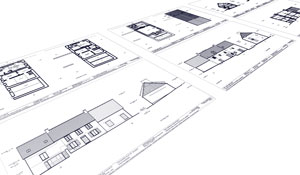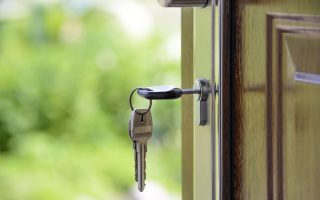The Role of the Architect in France


This is a brief guide to help you decide whether you should ask an architect to help you with your project.
Do you need to use an architect?
Buildings larger than 170sqm require the planning application documents to be produced by an architect. This is a legal requirement in France. This area does not necessarily correspond to the overall size of the building as certain areas are excluded and others are included according to specifics such as intended use of the room, ceiling size and other considerations.
Minor works are often carried out by individuals, without the help of an architect. For a successful project you need to have a good understanding of design, construction, legal requirements and finance. If you decide to manage the project yourself, make sure you are aware of your responsibilities before you start work. These include health and safety of the workforce, security of the general public, the design of the building and the construction. For example, you are responsible for injuries on site if they are a result of the building’s design.
There are two fundamental reasons for employing an architect. One is to achieve as much as possible within your budget. Efficient design in terms of layout and construction can significantly reduce the build time and therefore cost. They will design you a building that is more enjoyable and costs less to build, run and maintain. The second is to guide you safely through what is a complex process and make the project an exciting experience.
When to use an architect
The earlier you involve an architect, the greater your chances of success. Even if you intend to carry out the project yourself, ask them to make an assessment at the outset to put the project on the right path.
There are times when you should make your own choices, for instance when finding some land or a building to restore. However, the best time to call upon the services of an architect is before you buy. They will explain objectively the implications of this choice so that you can be sure that your project can be achieved in the way you intend. If it is not achievable, you will have saved valuable time and money and will be better equipped to go on and find the right purchase.
How to choose your architect
Look for qualified architects who specialise in your type of project and check their websites and references. See if they share your opinions on issues such as ecological design.
To find them look at property websites, magazines, and RIBA and Ordres des Architectes websites.
Check with the Architects Registration Board to make sure that the person you intend to employ is a fully qualified architect and not somebody who is illegally using the title.
Speak to a number of architects and choose the one with the best mutual understanding of your goals. Communication is key to a successful project.
How to work with your architect
Decide what it is that you are trying to achieve, e.g. a new family home, an escape in the wilderness or simple improvements to your existing house.
Arrange an initial meeting for the architect to assess the feasability and viability of the project; ie how long the project will take, how much it will cost and the chances of gaining planning permission. The design process can be started and some initial ideas exchanged.
Tell them all the ideas you have for the house however far fetched they may seem. They may find a way of achieving more of these than you expect.
If you have prepared a design, show it to them. They will be able to see from this what type of development you have in mind.
What will the architect produce
The design of the building is carried out using drawings and models and is a combined effort between you and the architect. To get the outcome you want, give the architect as much information as possible about how you intend to use the building and what you like and dislike.
Most importantly, ask the architect to explain the decisions they make to understand the choices and compromises made on your behalf.
Once you are satisfied with the design, the drawings will be submitted to the Mairie as a planning application. The architect will make the relevant application with the appropriate information.
Following planning permission
Once you have obtained permission, the architect will develop the detailed design of the building with you. They will help you select a builder and appropriate contract.
You can go directly to builders at this stage if you wish, but an architect will be able to complete the design and assess the builders objectively for you.
The architect can monitor the works on site to make sure the drawings and specification are followed accurately. They will explain how the finances work and any other obligations to which you are liable.
The architect will ensure that the works are complete and all legal matters are resolved. For example a declaration needs to be made following the completion to the mairie that works have been carried out in accordance with the approved planning drawings.
By employing an architect you avoid the dangers inherent in the construction process. They will maximise the return on your investment. Once complete, a well designed building is worth more.
•With thanks to Tim Harris, MA (hons) dip Arch. RIBA Ordre des Architectes
Share to: Facebook Twitter LinkedIn Email
More in family, finance, guides, health, legal, renovation, work
By FrenchEntrée
Leave a reply
Your email address will not be published. Required fields are marked *



